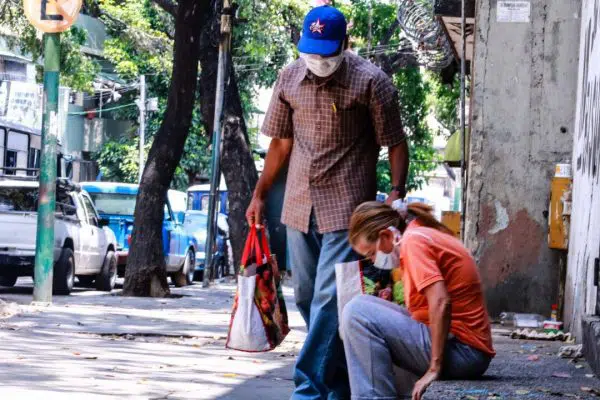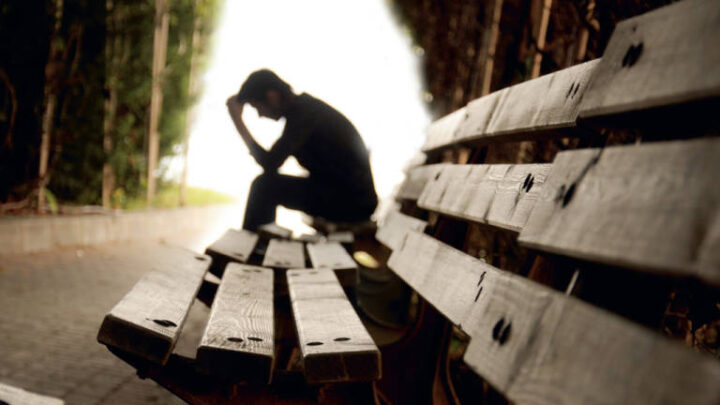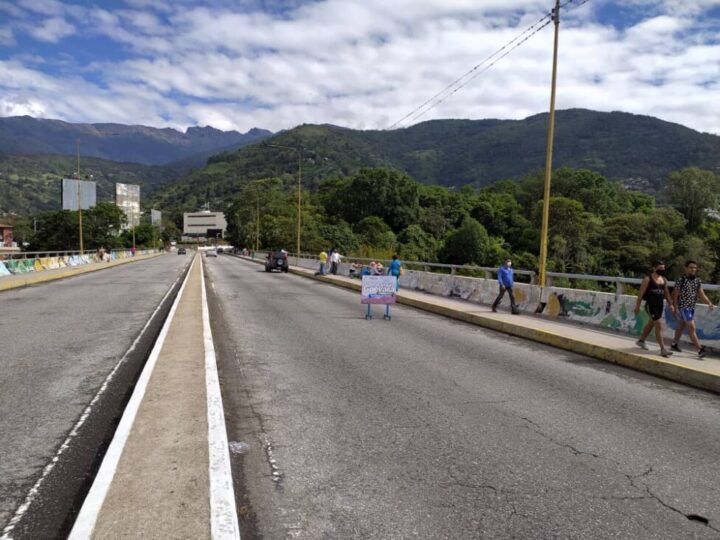Suicide, Another Face of the Crisis in Venezuela
 28 November 2023
28 November 2023

Suicide rates doubled in Venezuela during the harshest years of its humanitarian crisis. Males between the ages of 30 and 50, a productive age when it is very hard to be left without employment and income, are a group particularly vulnerable to self-inflicted violence. CREDIT: Ihpi
By Humberto Márquez
CARACAS, Nov 28 2023 (IPS)
In the wee hours of one morning in early November, Ernesto, 50, swallowed several glasses of a cocktail of drugs and alcohol in the apartment where he lived alone in the Venezuelan capital, ending a life tormented by declining health and lack of resources to cope as he would have liked.
In the last message to his relatives, which they showed to IPS, he wrote that “I can’t stand what’s happening to my eyes, I can’t afford an ophthalmologist, my molars are falling out, it hurts to eat, I can’t afford a dentist after years of being able to pay my expenses, now my dreams, plans, goals are disappearing…””The suicide rate fluctuates at the pace of the complex humanitarian emergency,” said Paez, because “as the macro economy deteriorates, so does the family’s ability to access food, services, recreation and medicine. This leads to mental disorders associated with suicidal behavior.” — Gustavo Páez
Years ago Ernesto, a fictitious name at the request of his family, was a successful salesman in various fields, a breadwinner for family members, a supporter of causes he found just. In his last note, he scribbled rather than wrote: “I did what I could, for my family and my country, but I will not continue being dead in life.”
The cascade of crises that have placed Venezuela in a complex humanitarian emergency have given rise to many complicated cases like Ernesto’s, reflected in an increase in suicides, especially in the sectors most vulnerable to lack of resources and to uncertainty and hopelessness.
The suicide rate “doubled between 2018 and 2022 compared to 2015, and it is very likely that the complex humanitarian emergency has been a determining factor in the increase,” demographer Gustavo Páez, of the non-governmental Venezuelan Observatory of Violence (OVV), told IPS.
This country of just over 28 million people went from a rate of 3.8 suicides per 100,000 people to 9.3 in 2018, with slight declines to 8.2 in 2019 and 7.7 in 2022, according to the OVV.
The annual average number of cases registered in the last four years is 2,260.
Rossana García Mujica, a clinical psychologist and professor at the public Central University of Venezuela, told IPS that these rates, although lower than the world average of 10.5 per 100,000 inhabitants and low in relation to other countries in the region, may nevertheless conceal underreporting.
The expert pointed out that “added to our complex humanitarian crisis, the last official yearbook (on the issue) came out in 2014,” and said that the decrease in the rate “could be due to the apparent economic improvement, but 2023 has been a difficult year and most probably these figures will not remain steady.”

A man carries a few items in his market bag in Caracas. The situation of poverty, of being unemployed and without the possibility of bringing home enough food and other products is recognized as a determining cause of crises leading to suicide. CREDIT: Provea
Humanitarian emergency
The HumVenezuela platform, made up of dozens of civil society organizations, says the crisis in the country classifies as a complex humanitarian emergency due to the combined erosion of the economic, institutional and social structures that guarantee the life, security, liberties and well-being of the population.
Starting in 2013 Venezuela suffered eight consecutive years of deep recession that cost four-fifths of its GDP, more than two years of hyperinflation, and collapsed local currency and wages, health and basic services in much of the country.
The multidimensional crisis also triggered the migration of more than seven million Venezuelans, according to United Nations figures.
In 2021 and 2022 there was a slight recovery in the economy, especially in consumption, partly due to the influx of remittances from hundreds of thousands of migrants, which came to a standstill this year.
The suicide rate “fluctuates at the pace of the complex humanitarian emergency,” said Paez, because “as the macro economy deteriorates, so does the family’s ability to access food, services, recreation and medicine. This leads to mental disorders associated with suicidal behavior.”
R. was an impoverished young woman who recorded a video that she posted on the social networks. She lived in the interior of the country, coming every month to Caracas to seek chemotherapy treatment in medicine banks provided by the government. She said that the last time, like other times, “they sent me from one end of the city to the other.”
“They were providing chemo until three in the afternoon. I arrived 15 minutes late. They refused to give it to me. I went to sleep at a relative’s house. I climbed about 200 steps (the steep hills in Caracas are crowded with poor neighborhoods). I’m so tired, my legs hurt, I give up, I don’t want to fight anymore,” she said in a quiet voice.
Paez said that another reason that may influence frustration and depression leading to self-harming behaviors is the grief in families due to migration, associated with the humanitarian emergency and impacting millions of families.

Clinical psychologists observe an increase in anxiety and depression disorders associated with suicidal behavior in adults. Among young people, self-injury and eating disorders are frequent. CREDIT: The Conversation
Ages and networks
In Venezuela “the economic issue, for those over 30 and especially for men between 40 and 50, is a determining factor,” psychologist Yorelis Acosta, who works with groups and individuals vulnerable to depression and fear, told IPS.
Acosta, who also teaches at UCV, said that “self-harm or the decision to take one’s life is closely related to ‘I don’t have a job’, ‘I’m out of work’, or ‘I have a disease and I can’t afford my treatment’.”
“During economic crises, suicides go up,” she said.
García Mujica said that “when we stop to look at which are our most vulnerable groups, men between 30 and 64 years old and young people between 15 and 24 lead the way.”
“In my practice I have observed a subjective increase in anxiety disorders and depression in adults, both closely associated with suicide and self-injury in young people, along with eating disorders,” said García Mujica.
Along with suicide, “self-harm is a way of coping with emotional pain, sadness, anger and stress that could have to do with intolerance of frustration and the immediacy associated with social networks,” said the expert.
“In my opinion, apart from our complex humanitarian crisis, we do not escape the problems also inherent to globalization and we have a very severe problem at the family level of face-to-face communication,” she added.
In this regard, she said that “it seems that family life takes place more on the phone than live, leaving the field open for adolescents to be nourished more by social networks than by real interactions.”
Between 2019 and 2022, of the cases of suicides reported in the media, 81 percent involved men and 19 percent women, according to the OVV; between 50 and 57 percent were adults between 30 and 64 years of age.
Teen suicide, meanwhile, has increased: there were 20 cases in 2020, 34 in 2021 and 49 in 2022. And 17 of the victims were under the age of 12.

View of an elevated viaduct (bridge) linking two parts of the Andean state of Merida. Authorities protect its sides with metal nets, to prevent it from being used by people to commit suicide, a phenomenon in which this mountainous region stands out since the beginning of the century. CREDIT: Government of Merida
Suicide in the mountains
One particularity is that Mérida, one of Venezuela’s 23 states, located in the Andes highlands in the southwest of the country, which has abundant agriculture and is home to some 900,000 people, has had the highest suicide rates for 20 years, reaching a peak of 22 per 100,000 in 2018.
“One of the reasons may be the character of the Merideños, especially in rural areas. They are introverted, quiet Andean people, who have a hard time letting things out, they bottle up a lot of negative feelings and thoughts or family conflicts,” said Paez.
Paez, coordinator of the OVV in Merida, also mentioned as a probable cause the widespread consumption of alcohol, and “in this state specialized in agriculture, the easy access to agrochemicals, often used to commit suicide.”
In the country 86 percent of the suicides registered last year by the OVV were carried out by hanging, poisoning or shooting.
Mérida continues to have the highest rate, 8.3 per 100,000 inhabitants, followed by the Capital District (west of Caracas) with 7.6, and Táchira, another Andean state, with 6.9.
According to the World Health Organization (WHO), there are at least 700,000 suicide deaths per year worldwide, with the most affected territories being the Danish island of Greenland (53.3 per 100,000 inhabitants), Lesotho in southern Africa (42.2) and Guyana on the northern tip of South America (32.6)
In the Americas, the countries with the highest rates, after Guyana, are Suriname (24.1), Uruguay (21.2), Cuba (14.5), the United States (14.1), Canada (10.7), Haiti (9.6), Chile (9.0) and Argentina (8.4); and the lowest rates are in the small Caribbean island states of Antigua and Barbuda, Barbados and Grenada (0.4 to 0.7 per 100,000 inhabitants).

Another aspect of the multidimensional crisis in Venezuela is the severe lack of face-to-face and family communication. According to some specialists, it seems that family life takes place more on the phone than live, leaving the field open for teenagers to feed more on social networks than on real interactions. CREDIT: The Conversation
Waiting for the government to take action
The experts consulted agree that in order to curb the rise in suicides, it is necessary to strengthen public health systems – “they are in crisis, if you call to make an appointment, you have to wait several months,” said Acosta – develop prevention programs and identify vulnerable groups or individuals with greater precision.
Paez added the need for the government to produce and maintain “updated and relevant statistics, disaggregated nationally and regionally by age, sex and other data that identify vulnerable groups and areas,” and more education “so that the issue is no longer stigmatized and taboo.”
García Mujica pointed out that “we need to direct our resources towards rescuing family values and preventing domestic violence in order to protect one of the most vulnerable groups, which are young people.”
“It is vital to take into account any comments regarding taking one’s own life and refer them to a specialist. In addition, we need to train more people in psychological first aid, so that the public is aware of the early signs of suicidal behavior,” added García Mujica.
These early signs may be followed by what become farewell messages received too late, a piece of paper or a video, traces of a humanitarian crisis.
